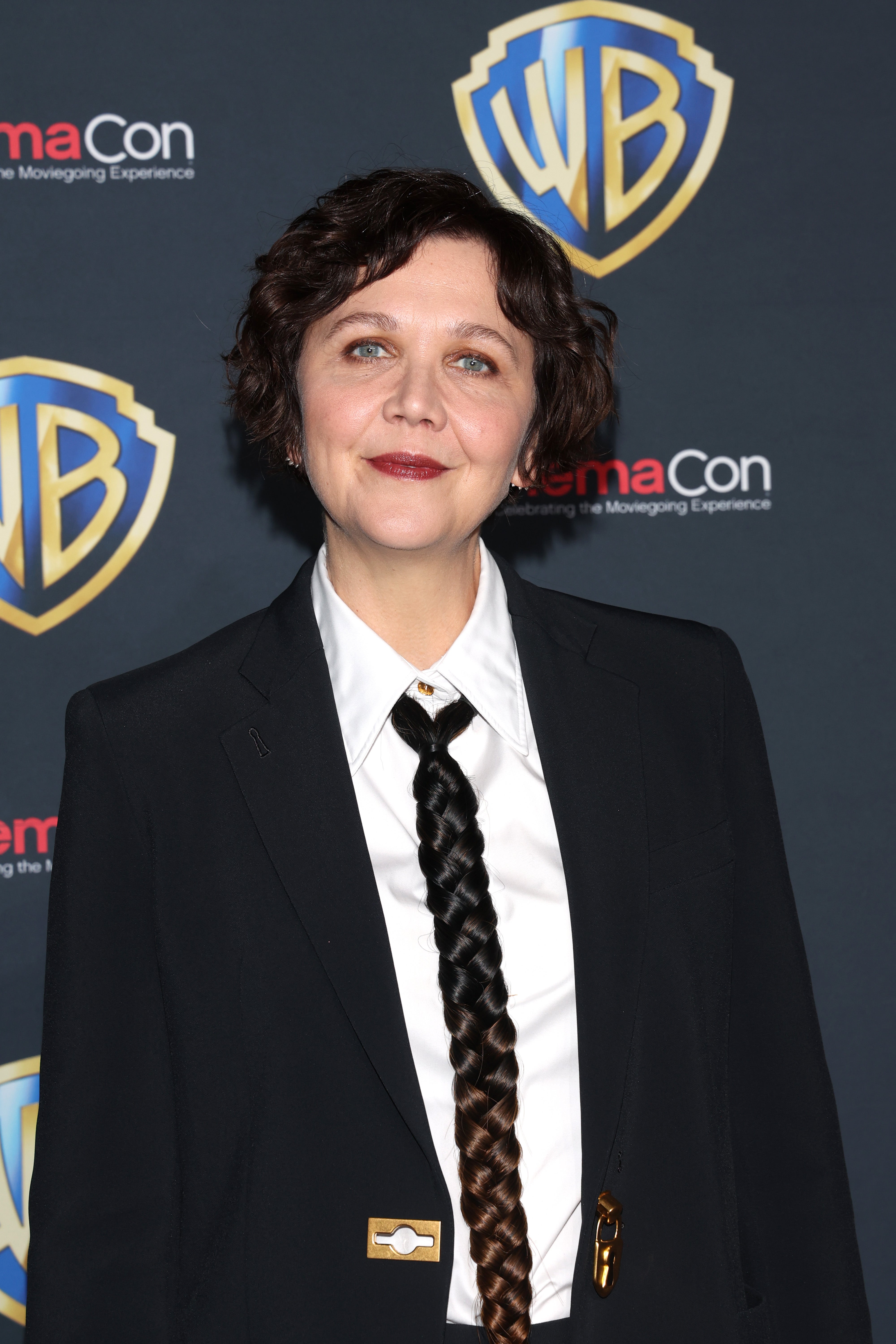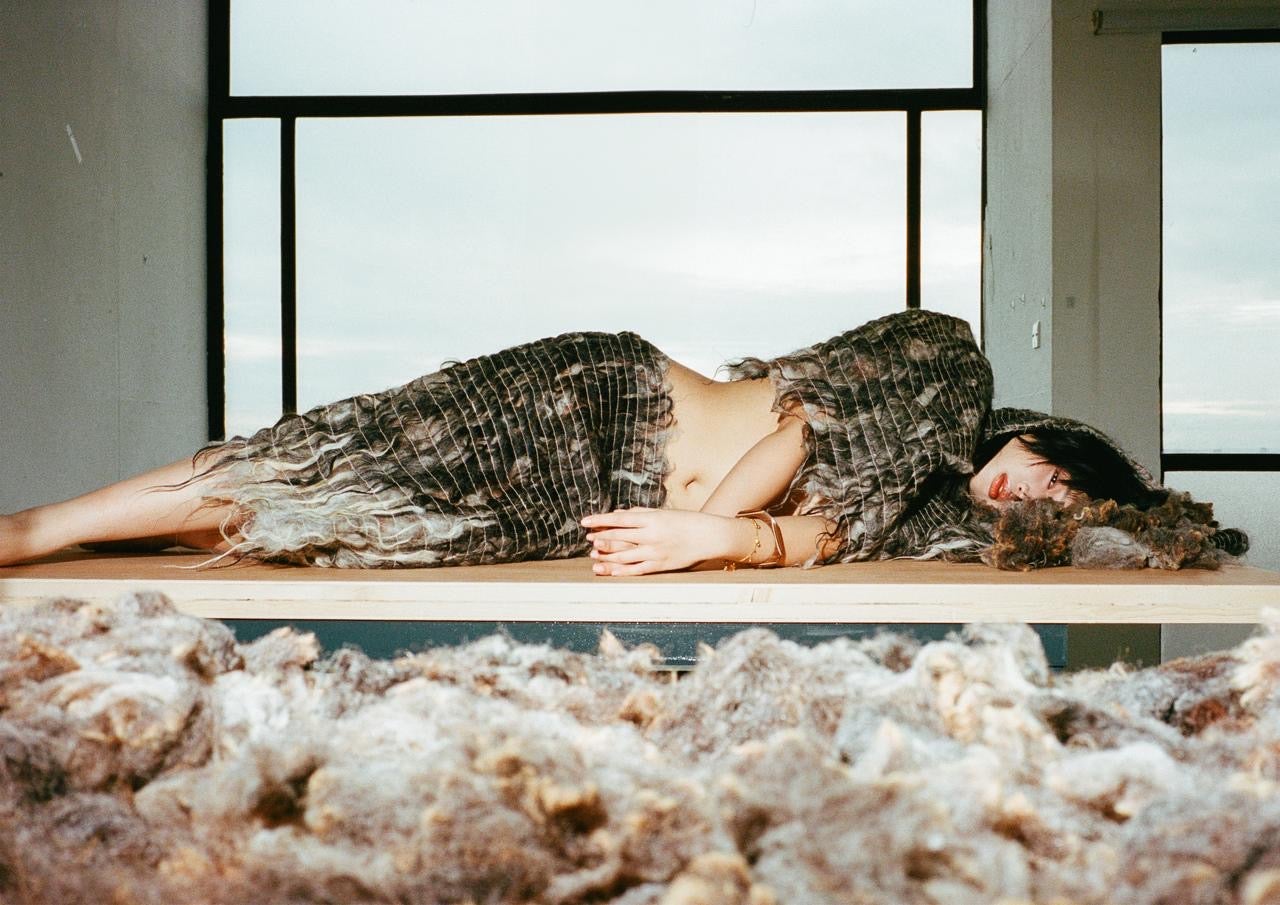Would you wear a braided suit tie made entirely of human hair? How about carrying a bag covered in long blonde locks, or buying underwear made to look like a full bush? Probably not on your spring fashion must-haves — but such are the designs introduced recently by high-fashion architects Daniel Roseberry of Schiaparelli, Francesco Risso of Marni, and John Galliano, formerly of Maison Margiela.
Fashion is getting a whole lot hairier. Not long ago, Irish designer Simone Rocha folded long strands of hair (like the ones that inevitably collect on the bathroom floor) into dangly bow earrings in her collection for Jean Paul Gaultier. And one of the most iconic outfits of the 2025 award season was Julia Fox dressed in a gothic sheer gown by Turkish designer Dilara Findikoglu with extensions crawling across her body for the Vanity Fair Oscars, as if Botticelli’s Birth of Venus had come to life.
From Fendi to Chloé, almost every brand this season played with animal hides, reimagining the material as fluffy collars and shaggy shoes. Gen Z jumped at the chance to get their hands on both vintage and faux fur garments the minute the trend took off. While fur, both animal and faux, has been successfully commercialized, human hair (or hair resembling it) is a more uncertain trend, one that may exist on catwalks but not on the street.
“Is this something people are actually going to be wearing day-to-day? Are people able to pick up on the trend in a quite accessible way? These are the questions,” Flo Palmer, a trend researcher on TikTok under @flotrends, told The Independent. “It’s also those high-end fashion influencers who are leading the charge and have an effect, commercially.”
Hair everywhere comes at a time when luxury market sales are down, and the potential for a 2025 upturn is being riddled by Donald Trump’s recently imposed tariffs. According to Flo, a commercial trend must be practical and accessible. It can be shown in a collection by the hottest designer or seen on Hollywood’s biggest “It-girl,” but for it to be a full-blown trend, it has to appeal to the general consumer.

Luxury fashion content creators Lara Violetta and Izzi Poopi have promoted hoop earrings and dresses made from hair on their pages, and fashion commentator and forecaster Mandy Lee (@oldloserinbrooklyn) recently predicted the design technique will continue to pervade the industry in the coming seasons in a recent TikTok video.
Artists started crafting with hair as early as ancient Egypt. The Victorian era (roughly 1837 to 1901) is when its popularity shot up, with artists fashioning jewellery, wigs, and personal mementos out of hair, leaning into the nostalgia of the organic material.
“It was this romantic idea of femininity,” Flo told The Independent.
This same concept has been a catalyst for several style fixations now — Chemena Kamali’s bohemian-inspired Chloé collections chock-full of frill, flowing garments being one of them — at the same time that tradwives and a return to conservative politics have dominated society. “It’s definitely down to this really hyper-feminine, really ethereal, almost whimsical trends that we’re seeing being picked up,” Flo explained, before noting that some of these fashion trends are not making it off the runway.
Javiera Shooaie Decap, a recent graduate of the Royal College of Art in London, made half of her final project collection out of human hair.
But Decap ultimately decided against producing and manufacturing clothing with the material since starting her professional career.
“I’m not at that point where I can make it ethical or sustainable for the market in a way,” Decap confessed. “It’s like, who are you getting all the hair from and are they okay with it?
For her grad collection, Decap got donated hair from a London salon and hair extensions from wig shops — but that’s not something that can be easily mass-produced. But she says that hair has amazing movement as a material, so she’s leaning into more custom pieces that play into that.
“I’m working with movement artists on costume pieces,” Decampe said.

Even if these campy pieces will primarily be reserved for statement-making moments on the runway or the stage, the design concept still can have a wider impact, because body hair trends tend to dovetail with contemporary social campaigns.
During the second wave of the women’s liberation movement in the 1960s and the 1970s, many women grew their body hair as acts of patriarchal resistance and female empowerment.
Right now, we’re seeing body autonomy being threatened under the Trump administration, and women are protesting.
While there aren’t women outwardly encouraging others to abstain from shaving or getting waxed in opposition to current gender politics, they’re shifting the narrative around traditional beauty standards and body hair practices, moving beyond hair as fashion to hair removal (or not).
Style influencer Cierra O’Day Johnson (@cierraoday) built an entire brand around her unibrow, but the feature that used to be her identifying accessory is simply just a part of her now. She told The Independent everyone has the right to remove body hair or not, or use hair as a fashion accessory, but a fashion trend shouldn’t dictate that. Just because there’s movement toward a certain style on the runway doesn’t mean everyone else needs to fall in line. In O’Day’s opinion, the hair designs are more of “fashion school art projects,” anyway.
Meanwhile, a social community known as #Bushtok online is using the concept of body hair freedom to make a political and fashion statement.
Gabriella Scaringe — founder of Cherri, a size-inclusive intimates and swimwear brand, and a leader of #Bushtok — described the movement as “part celebration and part protest.”
“It’s a bold reclaiming of pubic hair and a pushback against rigid patriarchal beauty standards that have told us we need to be hairless, perfectly pink, and tucked in to be desirable or ‘clean,’” she said.
Cherri went on to compare #Bushtok to other fashion trends.
“Especially in the wake of the ‘clean girl aesthetic,’ a lot of women are feeling burnt out by the constant performance of femininity — the maintenance, the polish, the pressure,” she continued. “Many are craving a return to their natural bodies, and realizing that when they do, they actually feel more feminine than ever.”

